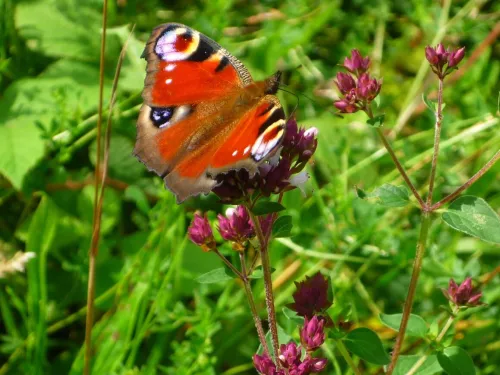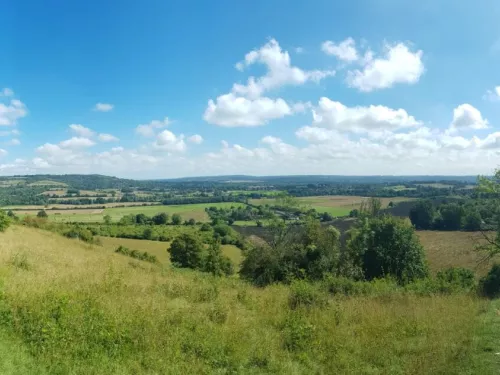Long Horn cattle
An old-fashioned breed with long horns which helps them to break down the scrub and the trees as they move around through the forest undergrowth. They have a mixed foraging behaviour browsing from the canopy and from the ground ripping up vegetation with their tongues. This lets more light down onto the forest floor, encouraging new plant growth and increasing the amount of birds, insects and reptiles that can use the woodland.
Exmoor Ponies
One of the oldest native British breeds in the country. They’re very fast and agile, they will work their way in through the undergrowth in the trees, following the cleared areas of the cattle. They will eat more of the woody vegetation and stretch up a bit higher to eat some of the higher vegetation. They’re very different to the cattle, for example, their teeth create a much more even layer on the ground. Between the two of them, the habitat will be mixed up in a lot of different ways which creates more opportunities for a variety of creatures to make a home in their wake.
Iron-Age Pigs
Iron-age pigs are a hybrid breed between a wild boar and Tamworth pig. They do a similar job to a wild boar but they don’t have the legislative requirements under the Dangerous Wild Animals Act 1976.
While the cattle and ponies work on the vegetation, the pigs are working down on the floor. They’re going to disturb the ground, turning the snouts with their soil, allowing new seeds to come to the surface to germinate. It’s also going to create microclimates for tiny creatures to hide and get shelter in.
How do these breeds fit into the landscape?
These are old fashioned breeds which are designed to be living out all year round. They’re incredibly well-insulated, so they can handle tough winters. But in the summer when it’s hot, they use the woodlands to provide shelter from the sun and cover from the flies.
The wide variety of different habitats at the Blean will provide adequate food and shelter for the animals to remain healthy throughout the year. Alongside this, a team of volunteers works with Kent Wildlife Trust staff to carry out regular welfare checks to make sure.
Currently the only herd in a breeding situation at West Blean are the bison, this is so that we can monitor the growth of this herd closely and ensure all our conservation grazers have plenty of space and food.
Code of Conduct
We really want everyone to enjoy visiting the woods but to do that we need everyone to follow a few of simple rules to ensure the protection of the animals and the enjoyment of all.
- We ask dog walkers to keep their dogs on a lead at all times.
- Stick to footpaths and keep a respectful distance from the animals.
- Please don’t feed the animals or approach them as this encourages them to change their behaviour in negative ways.
We thank everyone who has already spotted these wonderful animals roaming through the woodlands and we encourage you to share your experiences with us on social media. Please tag us in your posts and use the hashtag #WilderBlean.
If you have any questions about the conservation grazers or would like to learn more, make sure to check out our web page and FAQ's.




